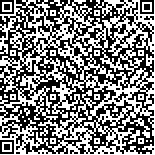| 引用本文: | 朱震琳,宋永贵,艾志福,朱根华,杨明,袁恩,苏丹.合欢不同药用部位的化学成分组成与分布特征研究[J].中国现代应用药学,2025,42(8):21-29. |
| zhuzhenlin,Song Yonggui,Ai Zhifu,Zhu Gen Hua,Yang Ming,Yuan En,Su Dan.Study on chemical composition and distribution characteristics of different medicinal parts of Albizia[J].Chin J Mod Appl Pharm(中国现代应用药学),2025,42(8):21-29. |
|
| |
|
|
| 本文已被:浏览 30次 下载 19次 |

码上扫一扫! |
|
|
| 合欢不同药用部位的化学成分组成与分布特征研究 |
|
朱震琳, 宋永贵, 艾志福, 朱根华, 杨明, 袁恩, 苏丹
|
|
江西中医药大学
|
|
| 摘要: |
| 目的? 基于超高效液相色谱-四级杆-飞行时间质谱(UPLC-Q-TOF-MS)技术,对合欢不同部位化学成分进行分析,探索合欢药用资源,同时寻找差异标志物,为合欢的质量控制与资源利用提供科学依据。方法? 采用UPLC-Q-TOF-MS技术对合欢不同部位(花、叶、根、皮、米)的化学成分进行定性分析,明确5个部位的化学物质基础,并利用分子网络对各类成分在合欢不同部位中的分布情况进行可视化分析。此外,通过主成分分析(PCA)和正交偏最小二乘法-判别分析(OPLS-DA),筛选获得不同部位的化学标志物。结果? 合欢不同部位共鉴定165个化合物,以皂苷、黄酮、脂肪酸、木脂素和酚类物质为主。各成分在合欢花中的表达最为丰富,皮其次,根最少。并且,和其他3个药用部位相比,合欢皮、合欢叶各自聚为一类,具有明显差异。OPLS-DA分析结果显示23个差异成分可以区分合欢不同部位。进一步的分子网络分析可见,皂苷、木脂素、脂肪酸类成分主要集中在合欢皮,而黄酮类成分集中在合欢花与合欢叶、合欢米中。结论 本研究获得了合欢五种不同药用部位化学成分存在的组成差异和分布特征,为今后合欢相关的质量控制、效应物质研究以及进一步地药用资源开发利用奠定了基础。 |
| 关键词: 合欢 化学成分 分布特征 分子网络 多元统计分析 |
| DOI: |
| 分类号:R284.1;R917.101?????? |
| 基金项目: |
|
| Study on chemical composition and distribution characteristics of different medicinal parts of Albizia |
|
zhuzhenlin, Song Yonggui, Ai Zhifu, Zhu Gen Hua, Yang Ming, Yuan En, Su Dan
|
|
Jiangxi University of Chinese Medicine
|
| Abstract: |
| Objective: Based on ultra-high performance liquid chromatography-four-stage pole-time-of-flight mass spectrometry (UPLC-Q-TOF-MS) technology, chemical constituents of different parts of Algaecia algaecia were analyzed, medicinal resources of algaecia algaecia were explored, and difference markers were found, so as to provide scientific basis for quality control and resource utilization of algaecia algaecia. Methods: UPLC-Q-TOF-MS technique was used to qualitatively analyze the chemical components of different parts (flowers, leaves, roots, bark, rice) of Albion albion, identify the chemical basis of the five parts, and use molecular network to visualize the distribution of various components in different parts of albion albion. In addition, the chemical markers of different sites were screened by principal component analysis (PCA) and orthogonal partial least squares discriminant analysis (OPLS-DA). Results: A total of 165 compounds were identified from different parts of Alhuaxia, mainly saponins, flavonoids, fatty acids, lignans and phenols. The expression of various components is most abundant in the flowers of Albizia, followed by the bark and the root. Moreover, compared with the other three medicinal parts, albizia bark and albizia leaf are grouped into one kind respectively, with obvious differences. OPLS-DA analysis showed that 23 different components could distinguish different parts of albizia. Further molecular network analysis showed that saponins, lignans and fatty acids were mainly concentrated in the bark, while flavonoids were concentrated in the flowers, leaves and rice. Conclusion: This study obtained the composition differences and distribution characteristics of the chemical components of five different medicinal parts of Althea althea, which laid a foundation for the future quality control, the study of effector substances and the further development and utilization of medicinal resources. |
| Key words: Albizia julibrissin chemical composition Distribution characteristics Molecular network Multivariate statistical analysis |
|
|
|
|
